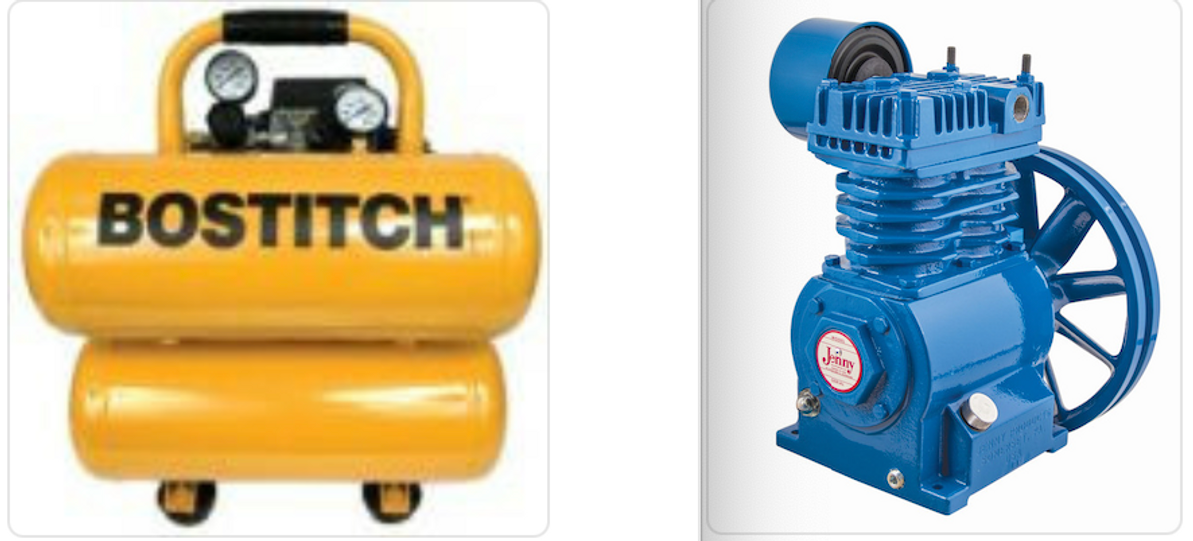Direct Drive vs. Belt Drive Air Compressors: Which is Better?
When it comes to choosing an air compressor, one of the crucial decisions you need to make is whether to go for a direct drive or a belt drive model. Both types of air compressors have their advantages and disadvantages, and understanding the differences between them can help you make an informed decision. In this blog post, we will compare direct drive and belt drive air compressors to help you determine which one is better suited for your needs.
Direct Drive Air Compressors
Direct drive air compressors are compact and lightweight, making them suitable for small- to medium-sized applications. They are designed with the motor directly connected to the compressor pump, eliminating the need for belts or pulleys. This direct connection results in a more efficient transfer of power from the motor to the pump, allowing for a more compact design and efficient air delivery.
Advantages of Direct Drive Air Compressors:
- Compact and Lightweight: Direct drive air compressors are smaller and lighter compared to belt drive air compressors, making them portable and easy to move around.
- Simple Maintenance: With fewer components, direct drive air compressors are generally easier to maintain and require less maintenance compared to belt drive air compressors.
- Higher Efficiency: The direct connection between the motor and pump in a direct drive air compressor results in higher efficiency and better performance, as there are no energy losses due to belts or pulleys.
- Cost-Effective: Direct drive air compressors are usually more affordable compared to belt drive air compressors, making them a budget-friendly option for DIYers or occasional users.
Disadvantages of Direct Drive Air Compressors:
- Limited Power: Direct drive air compressors are typically suitable for small- to medium-sized applications and may not provide enough power for heavy-duty tasks or industrial use.
- Higher Noise Levels: Direct drive air compressors tend to be louder compared to belt drive air compressors due to the direct connection between the motor and pump, which can result in higher noise levels during operation.
Belt Drive Air Compressors
Belt drive air compressors are larger and heavier compared to direct drive air compressors, and are typically used in more demanding applications where higher power and durability are required. They are designed with a motor connected to the compressor pump via belts and pulleys which allows for greater flexibility in adjusting the pump's speed and performance.
Advantages of Belt Drive Air Compressors:
- Higher Power and Durability: Belt drive air compressors are capable of providing higher power and are suitable for heavy-duty tasks and industrial use. They are designed to handle continuous operation and are known for their durability and longevity.
- Quieter Operation: Belt drive air compressors tend to be quieter compared to direct drive air compressors, as the belts and pulleys help to dampen the noise during operation.
- Flexibility: The use of belts and pulleys in belt drive air compressors allows for greater flexibility in adjusting the pump's speed and performance, making them suitable for a wide range of applications.
Disadvantages of Belt Drive Air Compressors:
- Larger and Heavier: Belt drive air compressors are larger and heavier compared to direct drive air compressors, making them less portable and more difficult to move around.
- Higher Maintenance: Belt drive air compressors typically require more maintenance compared to direct drive air compressors, as the belts and pulleys may need periodic adjustments or replacements.
- Higher Cost: Belt drive air compressors are generally more expensive compared to direct drive air compressors, requiring a more significant investment upfront.
Both direct drive and belt drive air compressors have their pros and cons, and the right choice depends on your specific needs and requirements. Generally, belt-driven air compressors will produce much more cubic feet per minute (CFM) than direct drive compressors, where occasional use and portability are the main factors. If you’re in construction (roofer, framer, etc.) or run an auto body shop, a belt-driven air compressor is the only way to go. Otherwise, a direct drive compressor may be a good option for you.
Recent Posts
-
How to Properly Install a Pulley with a Bushing on Your Air Compressor Motor
Installing a motor or engine pulley may seem simple, but getting it right—especially when it i …Apr 24, 2025 -
Keep Your Air Compressor Steady – Don’t Skip This Simple Upgrade
No More Sliding, Shaking, or Skipping Around If you've ever had your air compressor "walk" acro …Apr 17, 2025 -
The Must-Have 16-Piece Air Tool Accessory Kit for Every Air Compressor Owner
Whether you're a seasoned DIYer, a weekend car warrior, or just someone who owns an air compres …Apr 9, 2025




